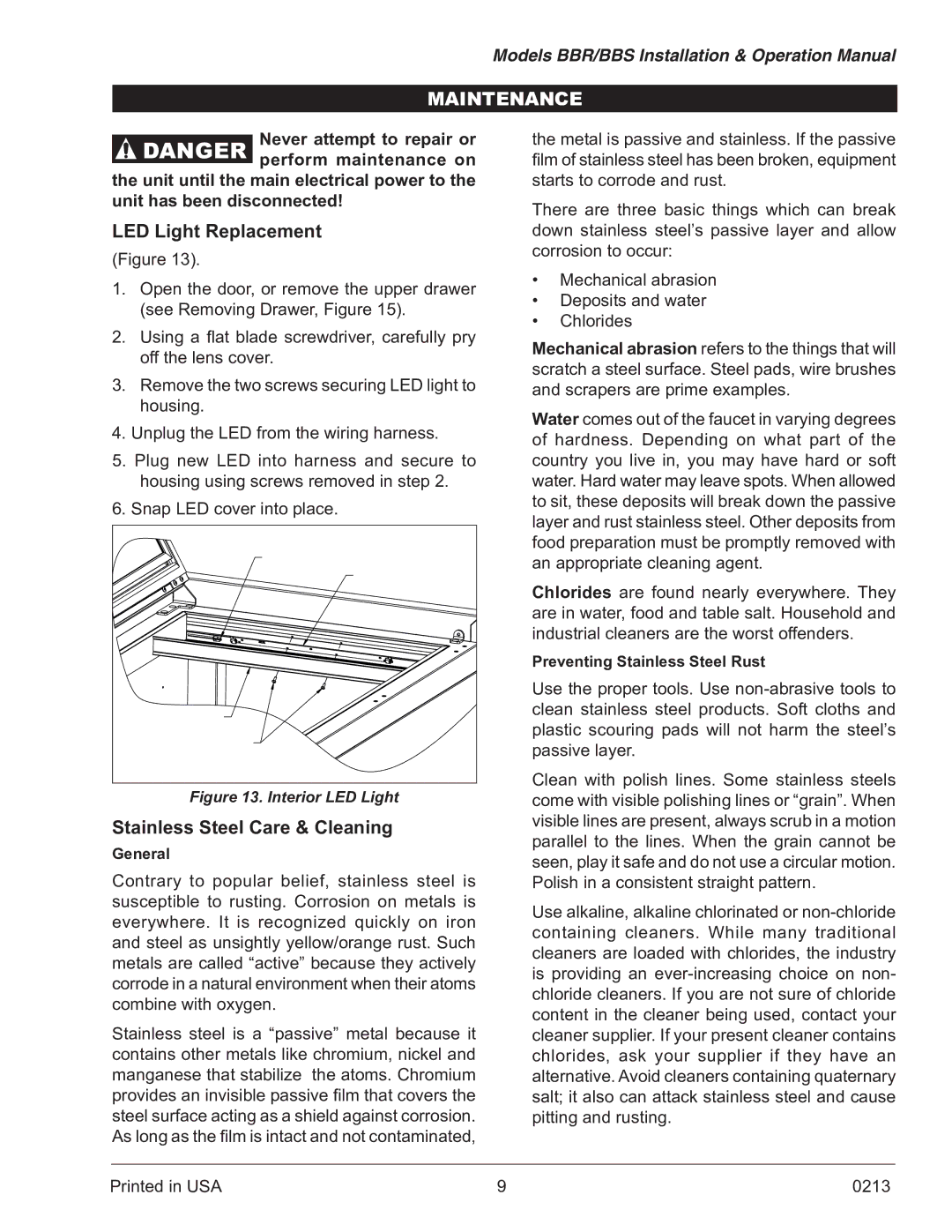BBSN, BBRN specifications
Perlick BBRN (Back Bar Refrigerator Neon) and BBSN (Back Bar Storage Refrigerator) are two standout models in the realm of commercial refrigeration, specifically designed for bars, restaurants, and other hospitality venues. These models are celebrated for their functionality, aesthetic appeal, and cutting-edge technology.The Perlick BBRN is specifically tailored for presenting beverages in style. It features an elegant glass door that allows for optimal visibility of the drinks inside. The LED lighting is both energy-efficient and vibrant, illuminating the products and enhancing the overall customer experience. With a temperature range that can be adjusted from 33°F to 38°F, the BBRN ensures beverages are served at optimal temperatures, enhancing the taste and overall quality when consumed.
One of the key characteristics of the BBRN is its stainless steel construction, which not only offers durability but also ensures easy cleaning and maintenance. The unit is designed to withstand the rigors of a busy bar environment, with features like a revolutionary compressor system that ensures consistent cooling without the noise that typically accompanies large refrigeration units.
On the other hand, the Perlick BBSN offers advanced storage capabilities. This model is designed for efficient organization of beverages, featuring adjustable shelves that can accommodate various bottle sizes. It is equipped with a precise digital temperature control that provides accurate readings, allowing bar professionals to manage stock effectively.
Both the BBRN and BBSN utilize Perlick's innovative technologies, such as the air-cooled system and efficient evaporators, which enhance the cooling process while minimizing energy consumption. This eco-friendly approach not only reduces operational costs but also supports sustainability initiatives within the hospitality industry.
Moreover, both models boast a seamless design, which integrates perfectly into any bar or restaurant layout. The sleek appearance is complemented by a variety of finishes, allowing operators to choose options that best fit their establishment's decor.
In summary, Perlick's BBRN and BBSN models are engineered for efficiency, elegance, and superior performance. With features that prioritize visibility, storage, temperature control, and energy efficiency, these refrigerators are indispensable assets for any establishment looking to provide an exceptional beverage experience. Understanding these features enables operators to make informed decisions, ensuring they select the right model to meet their operational needs.

